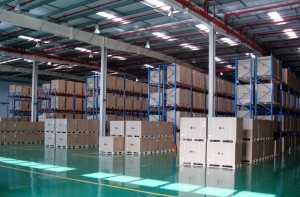For every company large or small, it is an inevitable fact that as a marketing strategy, they will do everything to minimize risks, decrease the costs of goods and services without compromising on the sales target. Reversal logistics is therefore the process of repossessing products or components for the purpose of recapturing value or appropriate disposal. It denotes the operational process of reusing products and materials.
While reverse logistics involves storage, transportation, handling, repair, repackaging, inspection and customer service, the very first step towards implementing the process is product retrieval. Second, the quality and quantity of variety of retrieved products is coordinated with other distributors and consumers after which the product is ferried to a central location for inspection and sorting. By now there are processes in place already to determine which products can be reused, remanufactured, resold or disposed off.
In today’s economy where it’s hard enough to facilitate the forward flow of goods in the market, it is even harder to retaliate on a backward flow resulting from defective cum returned products. Instead of approaching returns as a threat to your company’s performance, it would be in your best interest to treat it as an anticipated risk.
How? By using a tactful returns management strategy. This means taking advantage of the platform instead to foster stronger relationships with clients by providing the after sale service which ultimately spells reliability and commitment to quality service delivery. So there you go, not all is lost!
Ultimately, we cannot forgo the costs of returns on the company’s finances. This product was already channeled to its destination and incurred transportation costs, then it was rejected and channeled back to your company before a replacement was sent back to the customer. The transport expenses triple the bet and to add vinegar to the soar wound, the whole process was baptized a failed service encounter by the client. So it happened, but this is where we not only anticipate future happenings but also thoroughly manage the inevitable returns.
Here are few basics to consider ensuring an effective returns management:-
- Involve the right people from the start from operations, customer service, logistics, accounting and finance who understand the cross functional nature of returns and who can effectively invent a reversal mechanism for maximum effectiveness.
- Incorporate gate keeping mechanism which involves screening procedures that help identify how and which are the products that succumb to rejection. This however requires an in-depth understanding of the cost of return in relation to the product value.
This coupled with quality control initiatives by the company in the manufacturing and distribution processes can help minimize returns big time.
- Effective operational policies and practices should also be developed to handle the returns. Determining the return’s disposition as early as possible helps maximize the return value of the product. The products to be resold can hence be immediately channeled through the forward supply chain and the one to be remanufactured identified so plans can be initiated right away to help maximize the best value recapture of the product.
- The operational team will also need to pursue value and efficiency goals and employ the quality first approach to help align the demand and supply cycle appropriately which will ultimately minimize the needs for the product returns.
This write-up was brought your by the guys from UCS, UK number 1 courier and logistics service. UCS has many years of logistics and courier experience and aims to provide their clients with unequalled value and service.
